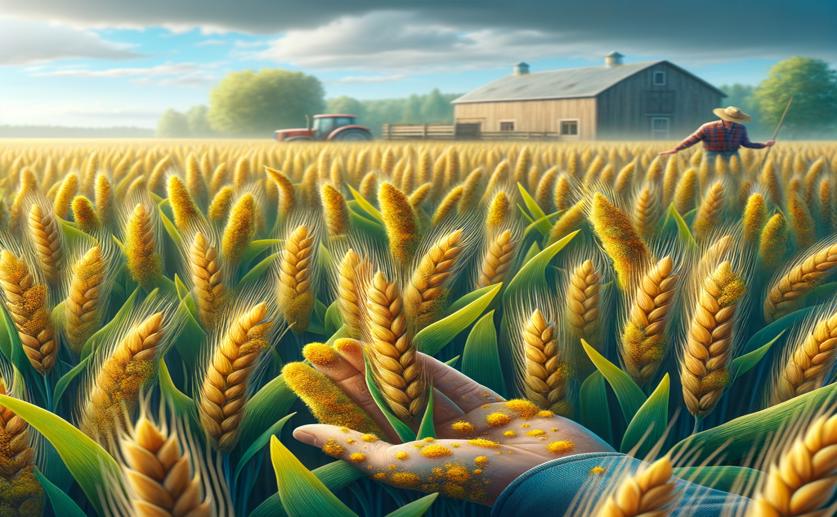
Spring Wheat Genes Show Strong Resistance to Yellow Rust in Field Conditions
Jenn Hoskins
18th June, 2024

Image Source: Natural Science News, 2024
Key Findings
- The study tested the effectiveness of three APR genes—Yr18, Yr29, and Yr46—against yellow rust in wheat fields in Denmark and the UK
- All three APR genes significantly reduced disease severity, with Yr18 and Yr46 being particularly effective
- Advanced techniques, including deep learning, were used to quantify fungal biomass, providing precise and objective measures of disease resistance
AgricultureGeneticsPlant Science
References
Main Study
1) The adult plant resistance (APR) genes Yr18, Yr29 and Yr46 in spring wheat showed significant effect against important yellow rust races under North-West European field conditions
Published 17th June, 2024
https://doi.org/10.1007/s10681-024-03355-w
Related Studies
2) A simple method for comparing fungal biomass in infected plant tissues.
3) Yellow Rust Epidemics Worldwide Were Caused by Pathogen Races from Divergent Genetic Lineages.
4) Research investment implications of shifts in the global geography of wheat stripe rust.



 15th June, 2024 | Jim Crocker
15th June, 2024 | Jim Crocker